For the ethnic minorities in the Central Highlands in general and the Ba Na people in particular, the communal house is considered the “heart” of the whole village. With an important position in the material and spiritual life, the communal house is always respected by the people, considered as the soul of their clan.
The place to preserve the soul of the Ba Na people
Amidst the vast, sunny and windy forest, the communal house stands tall in the center of the village, like a guardian angel protecting the entire community.
This is where common activities of the villagers take place, where people gather to chat, share life experiences, organize festivals or conduct traditional rituals.
The communal house of the Ba Na people is usually tall, massive and imposing, but graceful. The roof is commonly about 15 to 20 meters high, with an A-shaped architecture, with the top decorated with a unique pattern. The four communal house roofs are thatched with grass. The two main roofs are very large, covered with a woven mat, covering more or less depending on the village, sometimes almost covering the roof, looking more beautiful and also protecting the roof in strong winds. The two gable roofs are isosceles triangles.
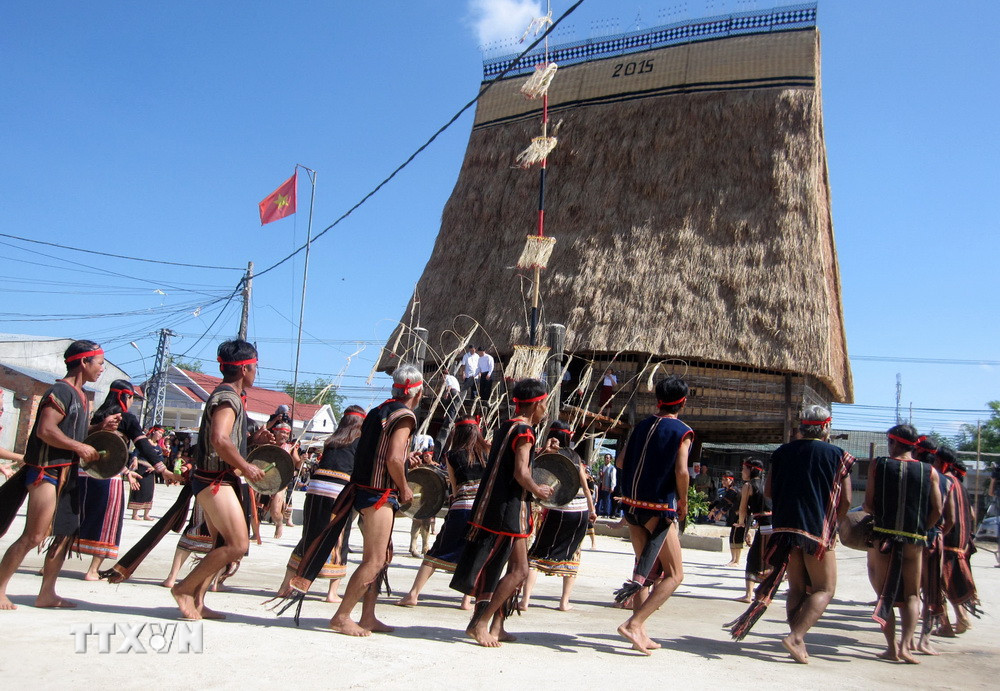
The floor of the communal house is usually from more than 2m to about 3m high. The inside of the communal house is formed from eight large wooden pillars, with the common architecture being a three-room house; often elaborately decorated with intricate patterns and sculptures. The entrance opens in the middle of the front of the house, through the courtyard floor and then to the stairs.
The communal house was built entirely by villagers using materials found in the forest, such as wood, bamboo, vines, and cogon grass. There were no metal materials used.
For a long time, many villages in the Central Highlands have been without communal houses for many reasons: Traditional houses were damaged and not restored, people built new houses with modern materials...
In recent years, the movement to restore communal houses has been focused on, with the organization and investment of the State and carried out by the local people. Traditional communal houses have been and are tourist attractions attracting a large number of visitors to learn and explore the culture and people of Ba Na.
See the house is see the village
To contribute to honoring the national culture and spreading the image of the Ba Na communal house, the Vietnam Museum of Ethnology (Hanoi) is preserving a prototype of the traditional communal house of the Ba Na people, built by Ba Na artisans in Kon Rbang village, Ngok Bay commune, Quang Ngai province (formerly Kon Tum ) more than 20 years ago.
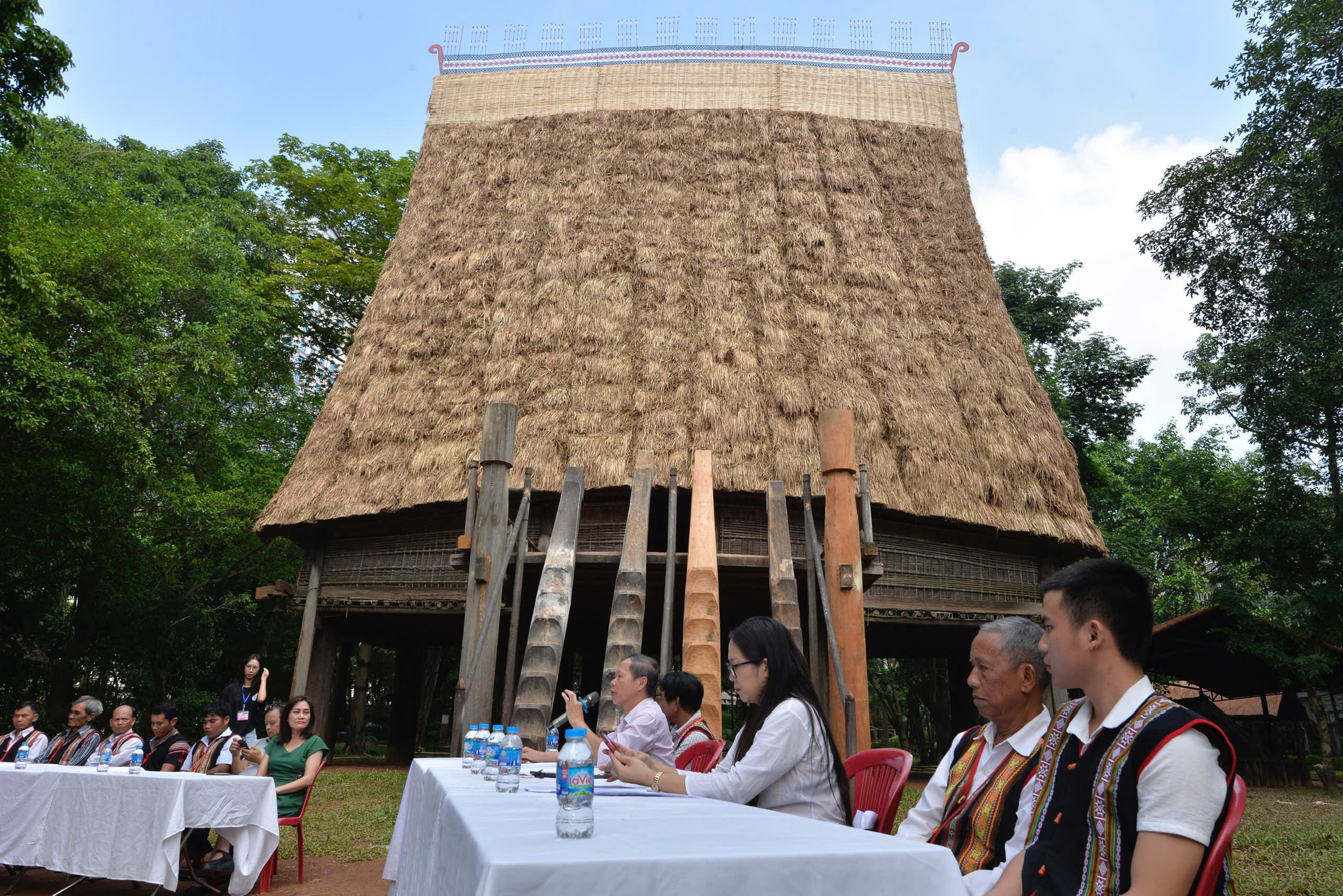
According to Dr. Bui Ngoc Quang, Deputy Director in charge of the museum, in the process of development, many traditional communal houses have been gradually replaced by corrugated iron-roofed communal houses, reinforced concrete communal houses or other modern materials. The museum has selected a typical communal house model of the Ba Na people in Ngok Bay commune to restore, thereby helping the public and visitors to understand more deeply about the architecture and cultural values of the traditional house.
Recently, the Museum organized a house restoration with the participation of 20 Ba Na workers for more than a month.
In the space of the communal house of the Ba Na people at the Vietnam Museum of Ethnology, village elder A Ngêh (born in 1953), Kon Rbăng village, Ngọk Bay commune enthusiastically shared his joy when the house built according to the traditional model became more spacious and beautiful. He was excited because in the capital there is also a communal house of the Ba Na people. Tourists from all over the country and even foreigners can also understand more about Ba Na culture.
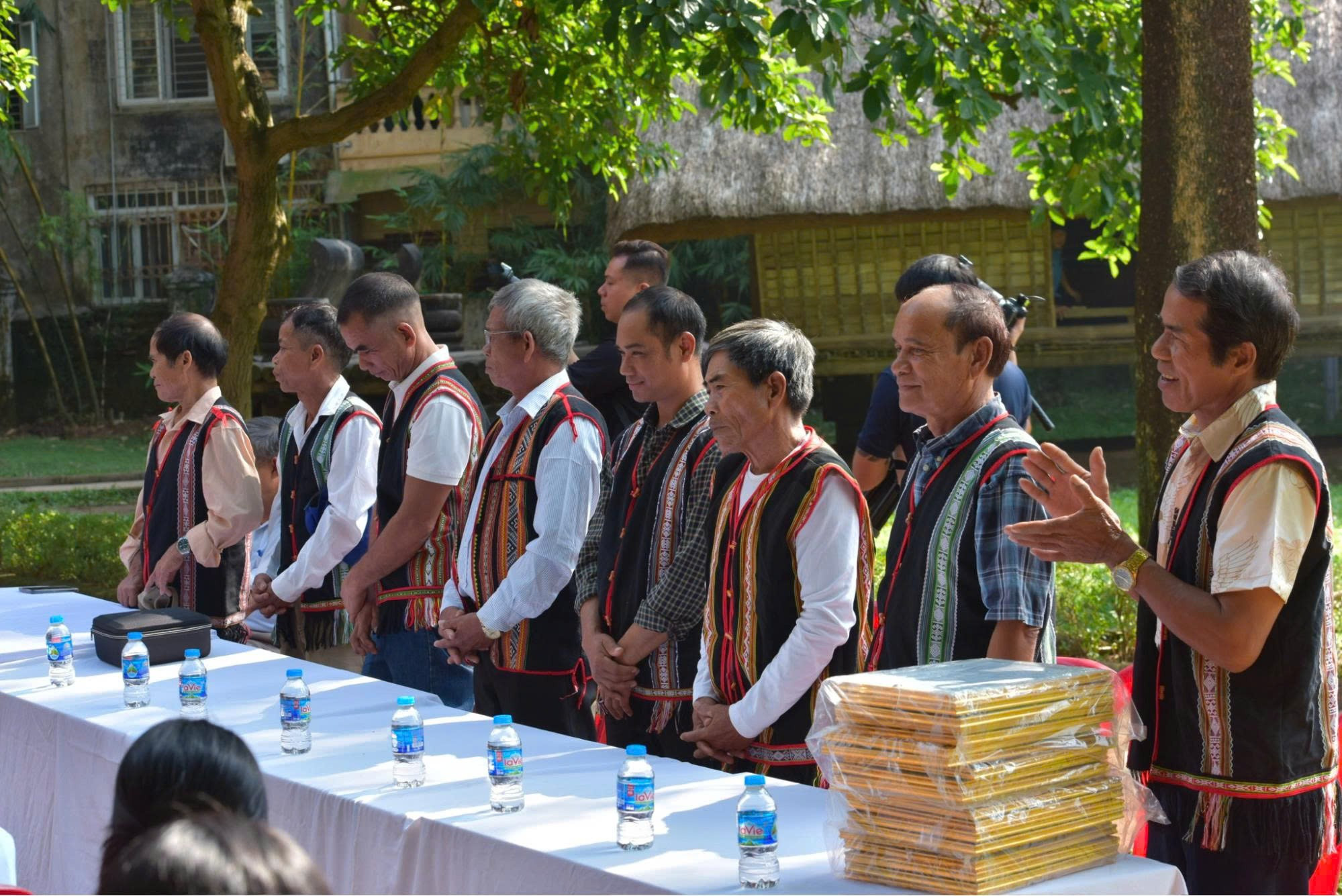
“The first time we went to the museum to rebuild the communal house was in 2003, when the group had 30 people, but now half of them are gone. Old people like us are in poor health and have difficulty traveling, but we still want to bring the young generation to Hanoi to rebuild the communal house. Seeing the communal house is seeing the Ba Na village. Only when I see the house being repaired with my own eyes, do I feel at ease,” said village elder A Ngheh.
Artisan A Wang (born in 1964) also continued the story: “Now in the village, when repairing the communal house, many young people participate. They know how to split straw, erect pillars, make roofs… The elders guide them, and the children can do everything. I just hope that the children will continue to build communal houses and preserve the identity of the Ba Na people. If they don’t do it, they will forget it.”
Persistently keeping the 'soul' of the village
According to Dr. Bui Ngoc Quang, to preserve sustainably, the Vietnam Museum of Ethnology adheres to four basic principles: Respect and promote the role of cultural subjects; each exhibition has a clear identity, owner, history, and location; items are made by local hands using traditional methods; and finally, introduce the overall material and spiritual life associated with the house.
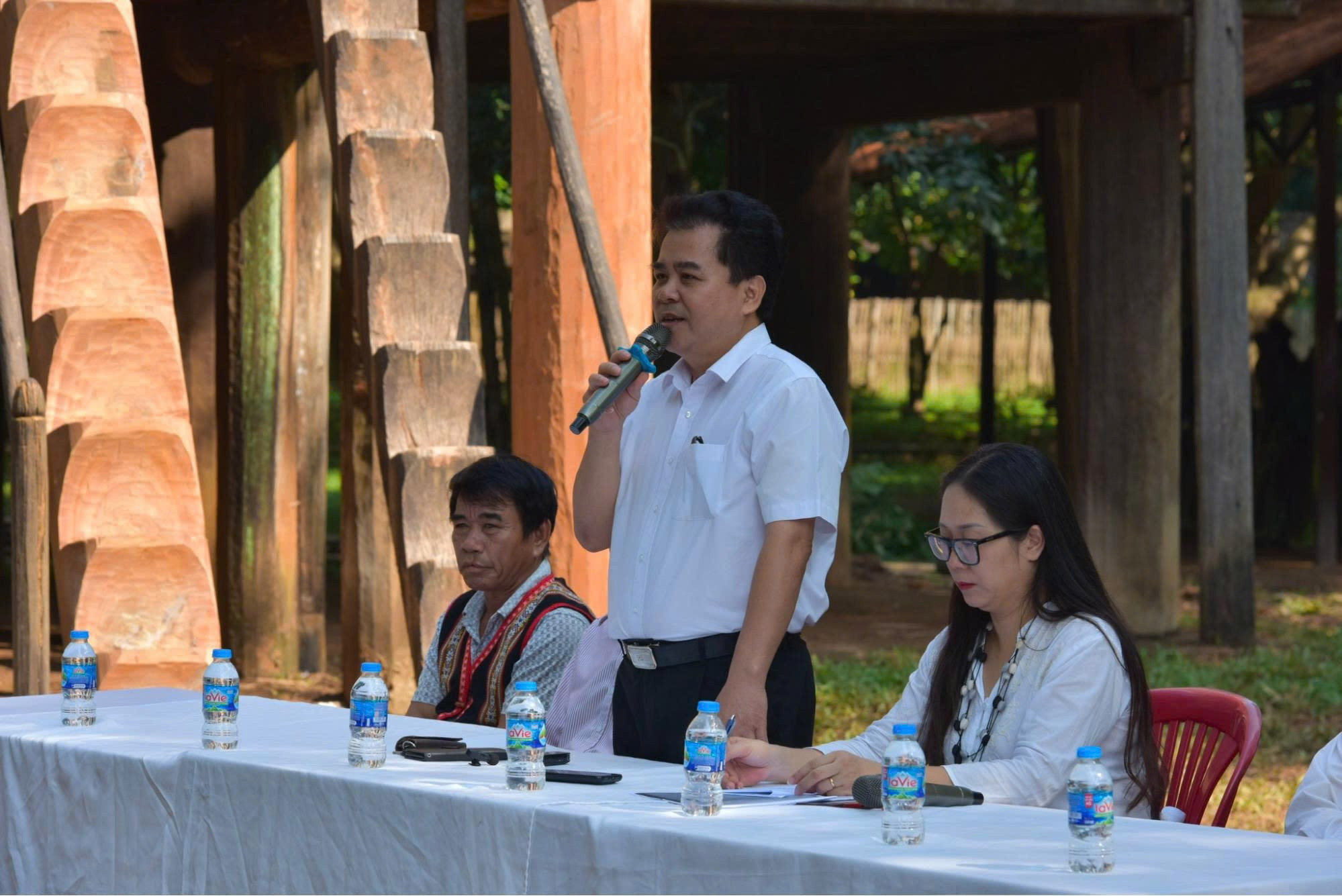
This approach helps museums not only "preserve artifacts" but also preserve living heritage, recreating the relationship between people-nature-culture.
However, the restoration of the communal house is not easy. Dr. Bui Ngoc Quang believes that nowadays there are not many opportunities for the younger generation to learn how to build a traditional communal house, partly because of the scarcity of materials, partly because of the impact of new life, communal houses are becoming less and less. Therefore, each time a communal house is built or repaired, it is an opportunity for the elderly to instruct the younger generation on how to build a traditional communal house.
“The construction, repair and restoration of the Rong house is not simply a matter of construction techniques but also carries with it many rituals and customs with unique spiritual meanings that need to be preserved and maintained. Each time the Rong house is restored, it is also an opportunity for the culture of the people of the Central Highlands to be continued and passed on to the next generation,” said Mr. Quang.
Dr. Bui Ngoc Quang emphasized that the communal house is the soul of the village, a place that nurtures the memories and spiritual strength of the Central Highlands people. Therefore, preserving the communal house is not only about preserving the architecture, but also about preserving the way of life, thinking and behavior of the community.
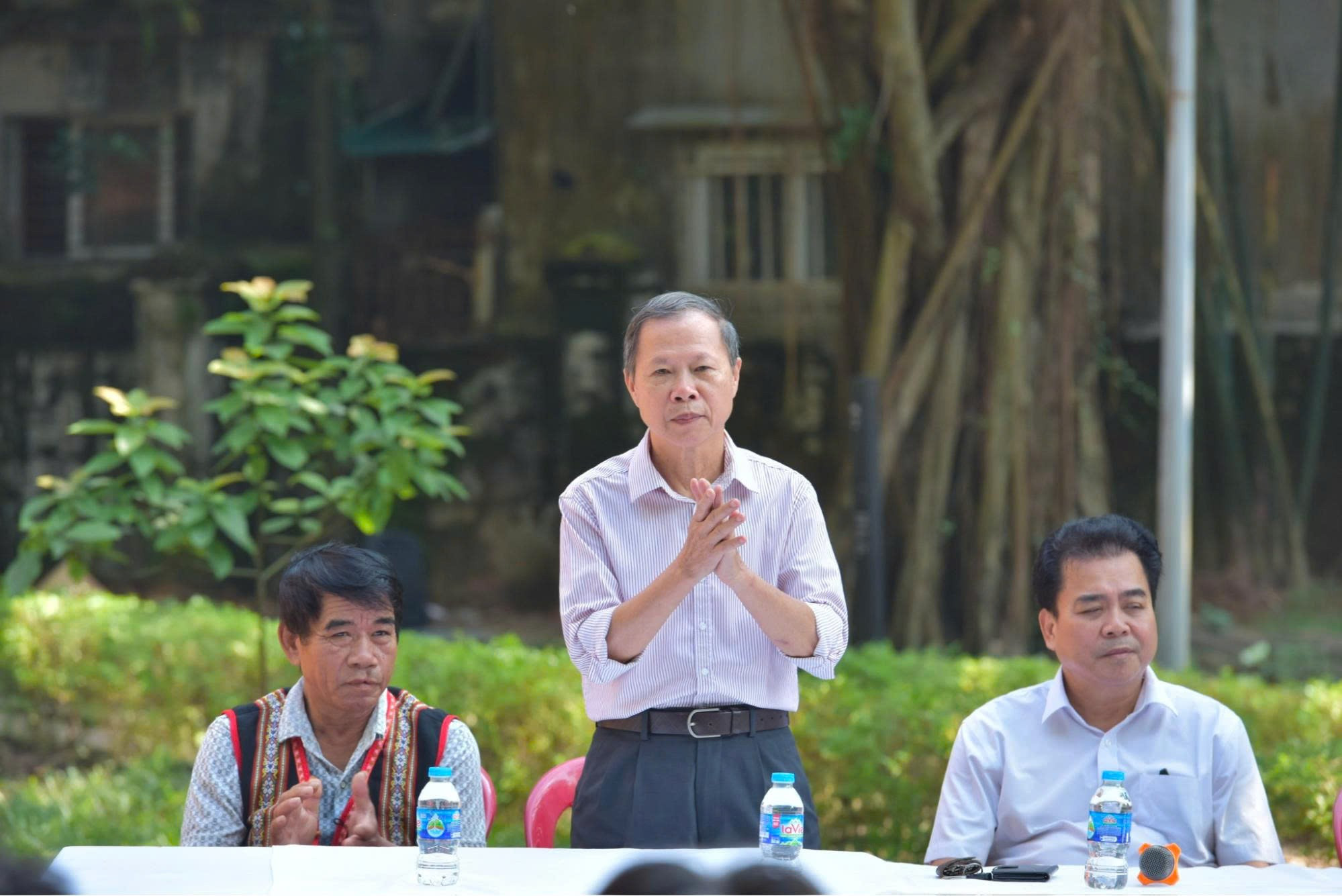
Dr. Luu Hung, former Deputy Director of the Vietnam Museum of Ethnology, shares the same view. He believes that restoring the communal house is a long-term process that demonstrates the deep bond between people and heritage.
In 2003, when the Museum invited artisans from Kon Rbang village to Hanoi to restore the communal house at the museum, the communal house in Kon Rbang village was no longer in its traditional form, but had been rebuilt with a corrugated iron roof.
However, after the communal house at the museum was restored, the artisans returned to the village and mobilized the villagers to re-roof the communal house in Kon Rbang village with thatched grass according to the traditional model of the Ba Na people in the Central Highlands.
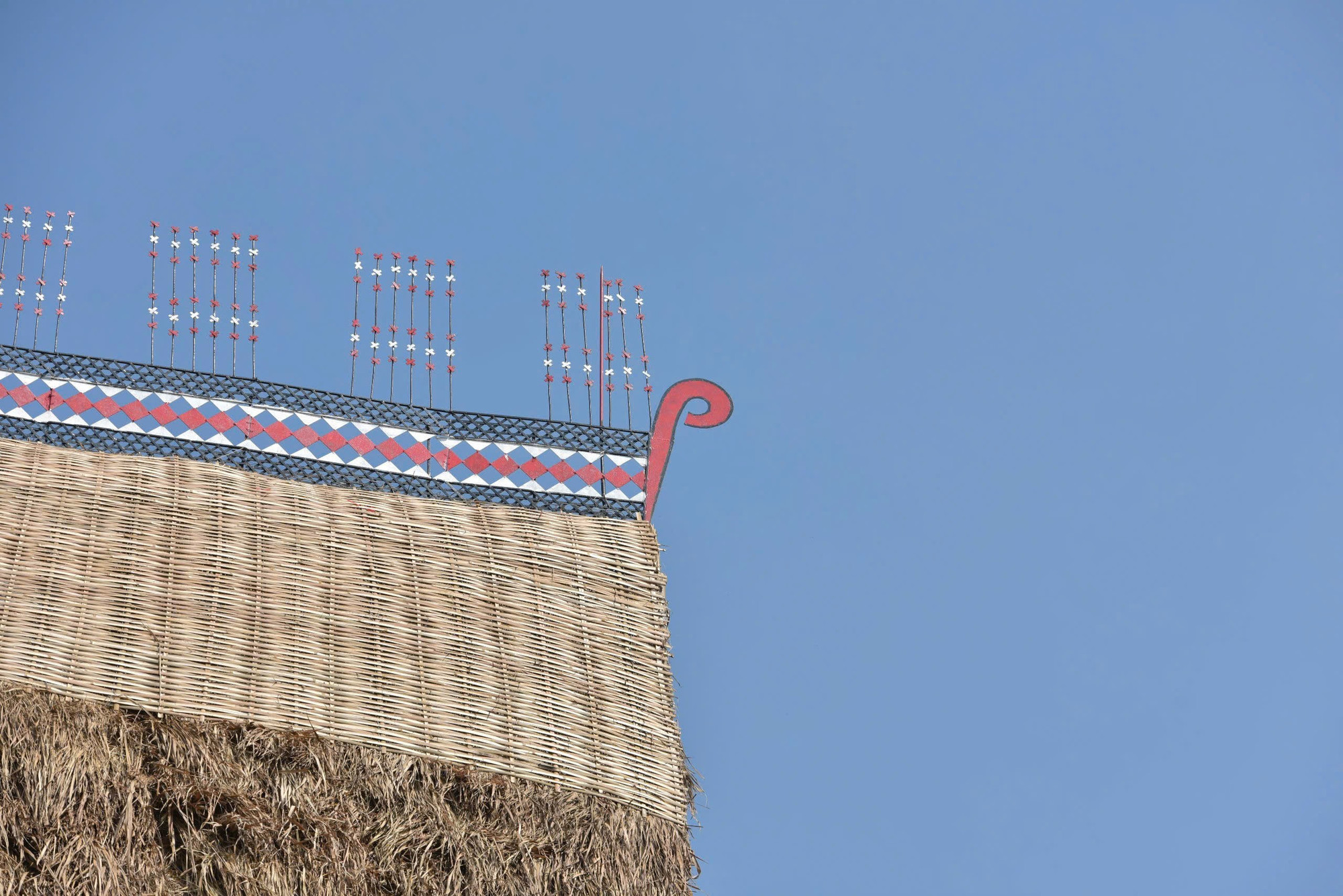
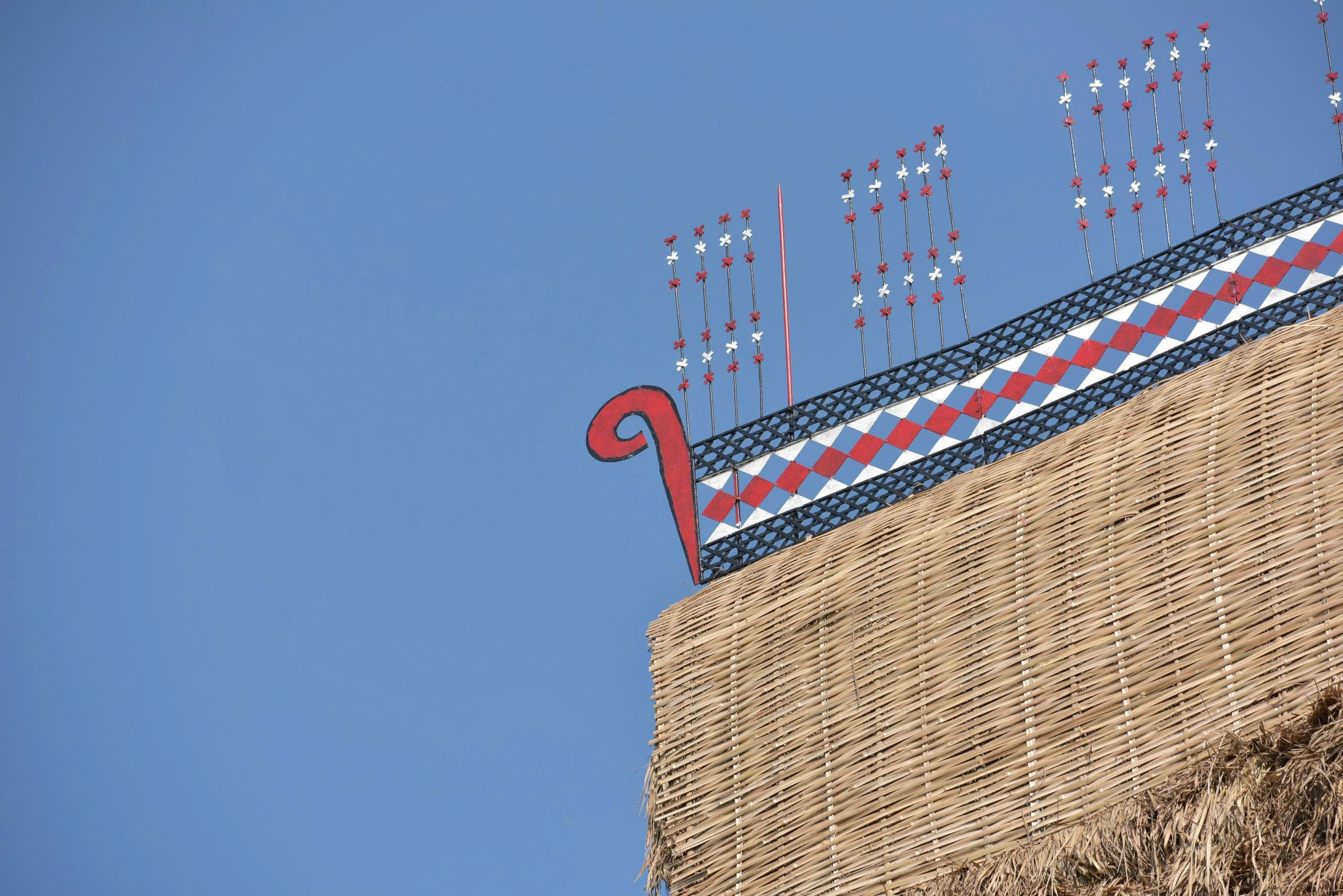
According to Dr. Luu Hung, building and restoring communal houses requires special techniques and materials: The pillars must be made from green star wood with a diameter of 45-60cm to ensure durability for hundreds of years, and the top of the pillars needs to be made from old forest wood so that it can be bent to the traditional shape.
During the restoration process, it is estimated that the Ba Na people performed more than 3,350 working days from January 2002 to the inauguration in June 2003 and both renovations.
“Each panel and each pillar carries the efforts and sentiments of the Ba Na people. After many years, the fact that they returned to repair their own house is proof that the cultural values are being preserved,” said Mr. Luu Hung.
After more than two decades of being affected by weather and urban environment, the Ba Na communal house at the Museum still retains its solid and majestic appearance, symbolizing the strength, solidarity and spiritual life of the Central Highlands people./.

Source: https://www.vietnamplus.vn/bao-ton-nha-rong-cua-nguoi-ba-na-giu-hon-dan-toc-giua-long-pho-thi-post1072004.vnp



![[Photo] Prime Minister Pham Minh Chinh chairs meeting on railway projects](https://vphoto.vietnam.vn/thumb/1200x675/vietnam/resource/IMAGE/2025/10/23/1761206277171_dsc-9703-jpg.webp)
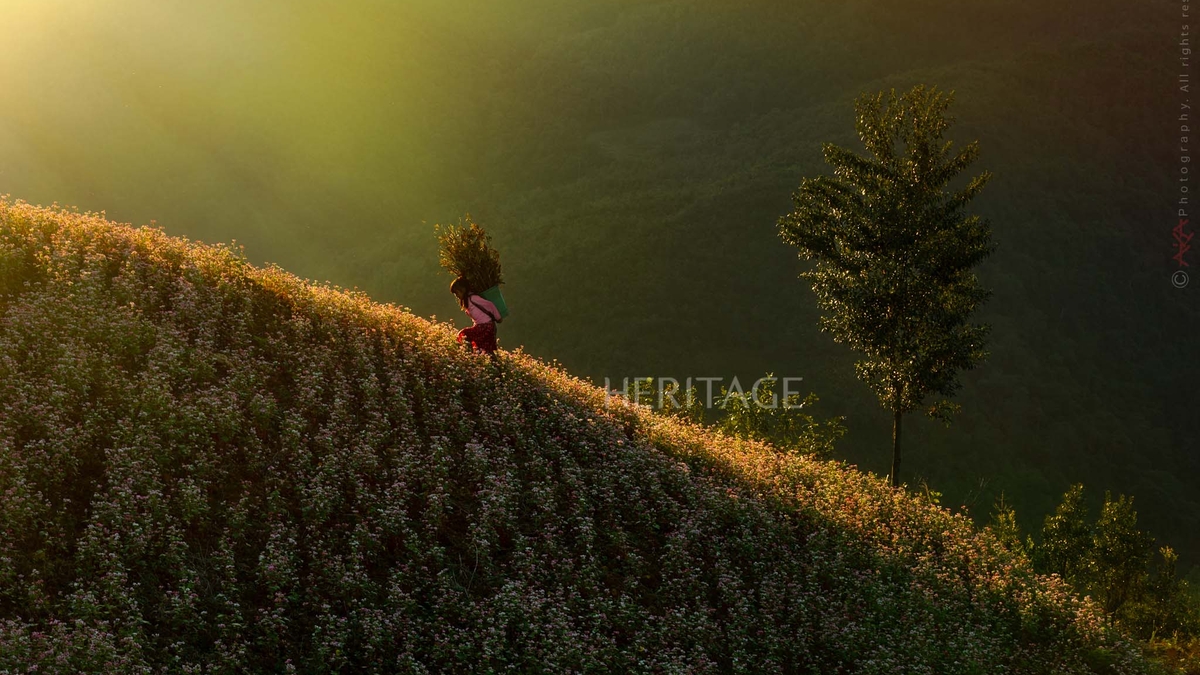


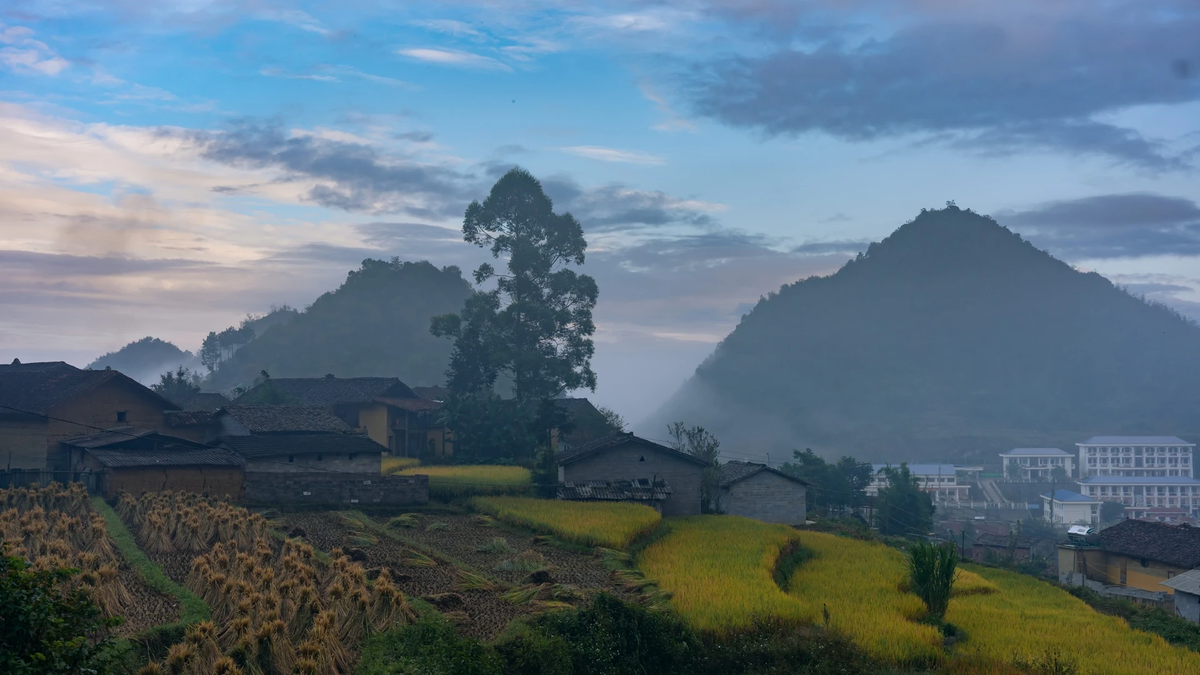



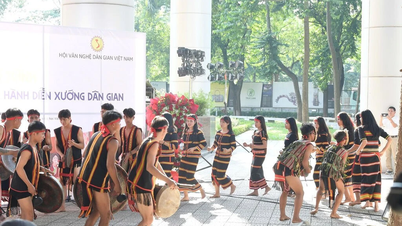
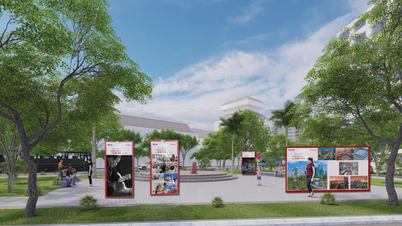
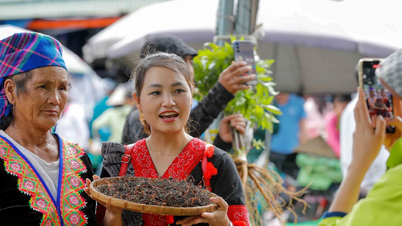
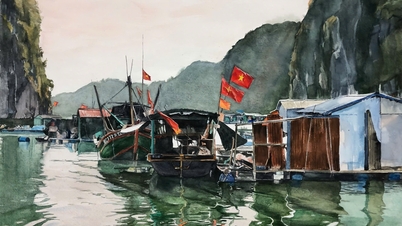

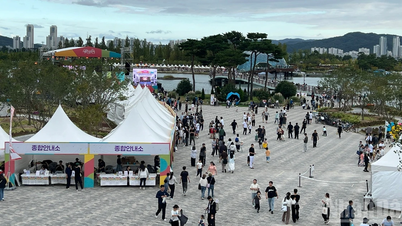














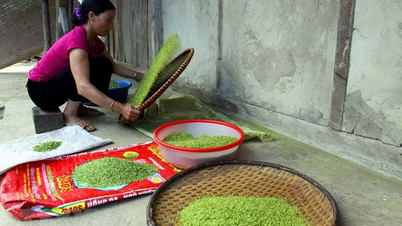
















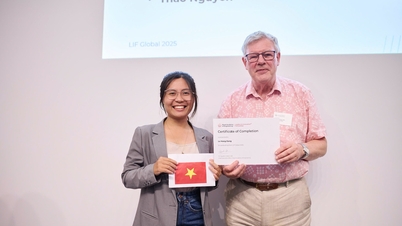







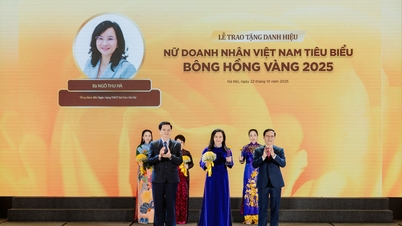












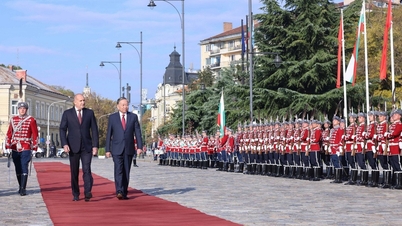











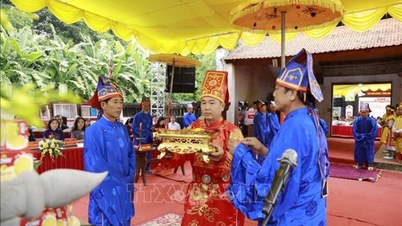

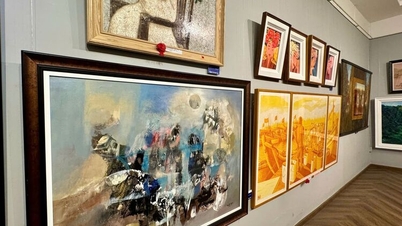
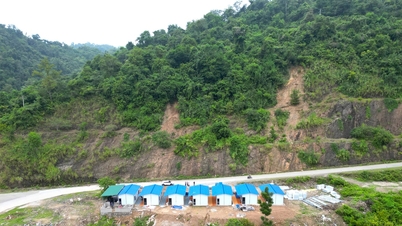

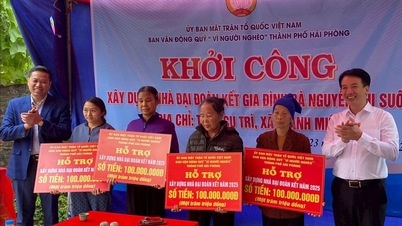


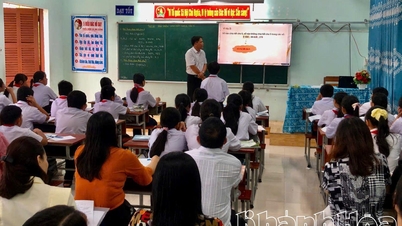












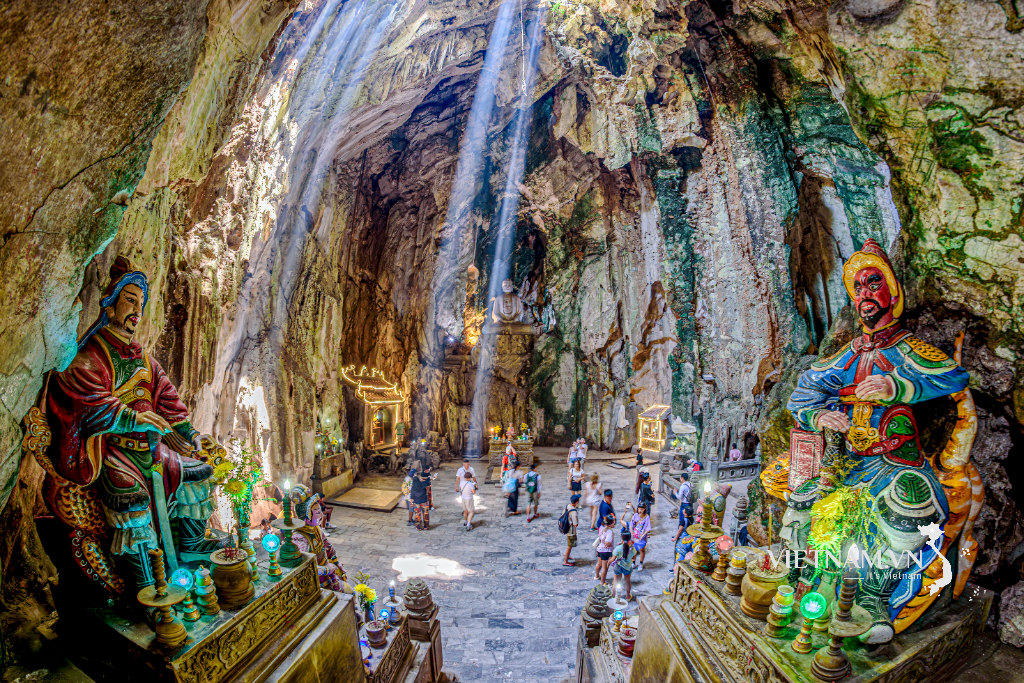



Comment (0)